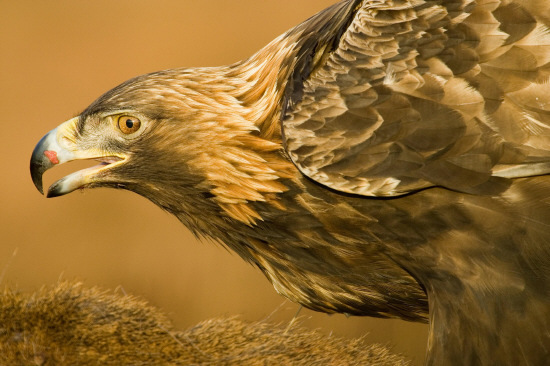Perthshire and Angus are two of the hotspots for the poisoning of birds of prey, new figures reveal.
The areas havelong been amongthe worst affected by the illegal killing of raptors and are again to the fore as the country faces what the Scottish Government calls “a disappointing return to high levels of poisonings.”
The number of illegal poisonings discovered in 2009 is one of the highest on record, and there is evidence that such activities have a significant impact upon some species, including the golden eagle.
In recent years there have been signs that they were on the decrease, but environment minister Roseanna Cunningham yesterday called the new figures a “wake-up call” to anyone who thought the problem was under control.
The minister joined forces with RSPB Scotland and the Scottish Rural Property and Business Association to meet scientists at the Science and Advice for Scottish Agriculture centre for the launch of bird poisoning maps.
Published by the Partnership for Action Against Wildlife Crime, they outline the number and location of confirmed poisonings in 2009 and cumulative figures for 2005 to 2009.
Some 22 incidents were noted in 2009, resulting in 27 dead birds of prey, including 19 buzzards, four red kites and two golden eagles.
However between 2005 and 2009 there have been 93 poisoning incidents that involved birds of prey, with 121 dead birds recovered.
The problem is thought to be even worse, with many cases undetected and unreported.
From 2005 to 2009 police forces have responded to poisonings all over the country, but numbers have remained highest for Lothian and Borders (20), Northern Constabulary (23), Strathclyde Police (19) and Tayside Police (17).
West Perthshire and the Borders have been particularly troublesome, with over 12 incidents each.
Ms Cunningham said, “These figures are a wake-up call to those who thought bird poisonings were on the wane.
“A total of 27 birds were found to be illegally poisoned in 2009 — a disappointing return to the high levels of several years ago.”
Ms Cunningham said the persecution of Scotland’s wildlife is “simply incomprehensible.”
She said, “Poisoning is an arbitrary method of killing which poses serious risks to other animals and potentially people, in our countryside.
“The protection of Scotland’s wildlife has never before occupied such a prominent position politically or in terms of the law.”
In 2007 RSPB Scotland said red kites would have been widespread were they not persistently illegally killed-with west Perthshire then one of the worst areas.
The group claimed that illegal killing of the birds was having a devastating impact, with 11 deliberate cases of red kite poisoning discovered in 2007, including five in Perthshire and two in Stirlingshire..
RSPB Scotland species and land management chief Duncan Orr-Ewing said, “Experience tells us that this represents just a fraction of the true scale of this illegal activity, which persist with shocking regularity in some areas of Scotland.
“It is the selfish actions of a minority that damage the standing of the shooting industry.”
Yesterday’s figures also revealed that the majority of poisonings carried out use carbofuran, which is illegal in the UK and potentially dangerous to humans.
One Angus community is all too familiar with the damage of bird poisoning-a poisoned golden eagle was found in Glen Esk in August.
Yesterday the Inveresk Community Council chairman spoke of his “disappointment” that the hotspot map suggested incidents were increasing, and called for tough action.
Charles Simpson said, “I’m disappointed to hear this news because I think these creatures have to be protected.
“They are a part of our cultural and natural heritage.”
He added, “I think it would be useful if many of these incidents in Scotland were followed through to a successful conclusion to show those responsible that they will not be tolerated.”
The public are warned not to touch any suspected poisoned animals or baits and to report them to Crimestoppers on 0800 555 111 or contact a wildlife police officer.
